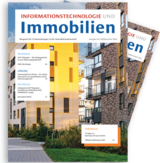Enough already! Post-it notes are not a solution. Modern customer management with the ticket system 2.0

In the age of the Internet and customer self-services, this procedure is no longer in keeping with the times. Rather, the primary goal should be to integrate customers and customer information (keyword: big data) into everyday business life. The basis for all information is usually contact with customers. In many cases, this contact no longer takes place solely by means of written letters, but via personal contact, email or even self-service solutions, such as Internet portals. Rigorous linking of these contacts allows you to determine the customer’s needs in a targeted manner and, ideally, to anticipate requirements in advance and thus influence purchasing decisions. This applies not only to in-store and online retail, but also in the rentals sector – assuming real estate managers view tenants as customers. Here the much-used buzzword “customer satisfaction” ignores the tenants’ requirements if the process focus of the individual application is not on the personal added value for the customer, and thus for the tenant. For example, customers are not necessarily satisfied with a property simply because they can live there and the property meets their individual demands. There are many more aspects relating to the rental object that influence the subjective perception of satisfaction – and this is precisely where customer-oriented service comes in.
Ending old communication patterns
The initial contact with a future tenant often begins via a third party.
This puts the real estate portal or estate agent at the forefront when it comes
to presenting the company, which certainly explains why real estate companies
sometimes invest absurd amounts in their corporate identities. Although the
major portals, such as Immobilienscout24, dominate the market and will continue
to do so for the foreseeable future, it is more consistent to market your own
offers in parallel on your own platforms (e.g., the homepage). This is not
simply about presenting an offer in an advertisement; it is also an individual
exchange of information. Many tenants view the exchange of tenants’
self-disclosures, creditworthiness checks and individual agreements in paper
form as a burden and believe this should be a thing of the past. The
consequence of this is a clean break away from old media and the familiar
documentation of correspondence towards a highly integrated, future-oriented
communication strategy with a standardised data basis for tenants and those
providing tenant support. If tenants are able to take care of their individual
queries with the real estate business service provider at any time, the this
results in a more positive attitude towards the landlord and rental object, and
thus inevitably in an increase in customer satisfaction. An automatically
generated confirmation of receipt in reply to an email query is often enough
to give customers the feeling that they have been noticed and, more
importantly, are being taken seriously. The actual processing is secondary at
this point.
Integrated CRM not stand-alone solutions
To ensure that subsequent processing is efficient and customer-oriented,
there needs to be sufficient information available regarding the tenant, rental
object and third parties, preferably ad hoc. Simple contract management does
not suffice at this point and also contradicts the customer focus of the widely
cited customer relationship management (CRM). If you rely on a software
solution with this as the focus, you will quickly discover that such
stand-alone solutions provide a wide range of functions, but completely neglect
the integrative approach of CRM or can realise this only through complex
interfaces to the ERP system. After all, contract management and business
partner management as well as master data maintenance for the real estate are
implemented in a solid, highly functional way in the ERP system and any
mirroring of information leads to an increase in redundancy and complexity. A
stand-alone solution always increases the administrative workload and makes it
difficult to achieve a standardised data basis, the latter being a prerequisite
for sound customer management. The most important factor when it comes to
motivating employees, and thus the best basis for communication with the
customer, is an application’s simplicity (as long as functionality is not
compromised).
Ticket system 2.0
To achieve all these goals, an integrated communications solution is the
only way to go. Whether tenants make contact by email, letter, in person or
via the Internet, as customers, tenants now expect prompt responses and
information. To allow you to meet these requirements, PROMOS provides the
option of process-supported ticket processing. No matter which medium tenants
use to communicate, an appropriate ticket is created automatically – or
manually in when contact is in person – and assigned to the business
partner, contract or another administrative unit. In this way, every enquiry is
documented as the first step, thus ensuring that no enquiries are overlooked.
The subsequent processing of the various issues can be performed in a very
differentiated manner or through a universal process schema. Technical support
is provided at all times. These two aspects support the standardisation of
complex processing and documentation as a basis for information, for example if
a tenant has queries.

Seamless status tracking is now standard and a key quality criterion for mail order companies and their parcel delivery services. You can go online at any time and track when and where the parcel was processed. Customers – who are also tenants – consequently view this as a legitimate requirement for all correspondence with the real estate company. Of course, this requires tenants to have access to an information and communication portal. A tenants’ portal is therefore no longer just a “nice-to-have”; it is essential for a forward-looking real estate company.
Furthermore, the integration of various means of communication and master data management enables a holistic evaluation approach right up to forecasts and the resulting plans for action and management planning. Within the agreed scope, the standardised data basis results in a common understanding and thus creates added value for tenants and customer advisors, as well as for third parties involved in the business communication with one another. And this is precisely what is meant by the partnership approach of customer orientation and customer satisfaction: customers who are satisfied with the service provided.

 Figure 2: All tickets relating to people or
contracts are saved and displayed together with the contract, regardless of
whether contact was via post, email, in person or in the form of a job from
the portal.
|
Author:

Martin Donath
Director Financials
PROMOS consult
Other articles by this author:
- Article "Perfect your processes. Tailor-made IT for invoice receipt"
- Article "Enough already! Post-it notes are not a solution. Modern customer management with the ticket system 2.0"
- Article “'Hello, this is Mr Smith. I have a question...' – how SÜDEWO now responds to tenant queries even faster with the CRM cockpit"


